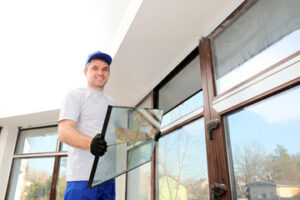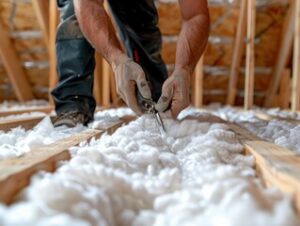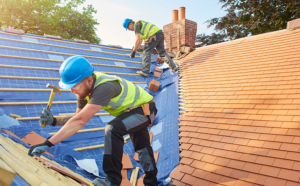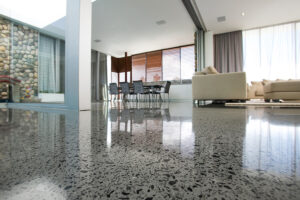If your home is experiencing drafts, moisture damage or high energy bills, it might be time to consider a window replacement. This is an important decision that should be made carefully.

Accurate measurements are crucial to ensure that your new windows fit properly. Make sure that you measure the width between the side jambs at three different points, and use the smallest measurement for your window size. Contact Window Replacement Ellicott City, MD for professional help.
Window replacement is an investment in your home’s comfort and resale value. However, there are many factors that can influence the total cost of the project. The number of windows being replaced, the type of frame material, and design upgrades can impact the price. It is also important to consider the installation process and any associated costs. Full frame replacements, which require the removal of the existing window frame, can be more costly than retrofit replacements.
Different frames have different prices, and each offers unique benefits. The size of the windows will also affect the overall cost, as larger windows tend to be more expensive than smaller ones. Energy efficiency is another consideration, as higher-efficiency windows will typically have a higher upfront cost.
Some homeowners choose to install custom windows, which can increase the cost. These windows may be built to meet specific requirements, such as hurricane-resistant standards or strict energy efficiency guidelines. State and local building codes may also affect window replacement costs. Stricter regulations can increase costs, while lenient codes can keep them low.
Additional costs that may be incurred during the window replacement process include demolition fees, labor, and materials. Demolition fees include removing the old windows, adjusting the frame opening size, and repairing or replacing drywall and trim. Labor costs include removing and disposing of the old windows as well as installing the new ones. Materials include the cost of the windows themselves as well as any necessary hardware and installation materials.
A window replacement can be an excellent way to increase the resale value of your home and improve its appearance. By choosing a high-quality, energy-efficient product, you can also reduce your energy costs and save on heating and cooling bills. It is best to have the windows installed by professionals, as they can ensure that they are properly fitted and will provide maximum energy savings. In addition, professional installers can offer a warranty and installation cost included in the final price. This can help you avoid hidden costs and surprises. The ROI on a window replacement can exceed the initial costs, so it is a smart investment for any homeowner.
Energy Efficiency
Inefficient windows contribute to heat loss and higher energy bills. Replacing older windowpanes and frames with newer double- or triple-pane windows can significantly reduce heating and cooling costs, as well as help ensure a comfortable indoor environment.
Many homeowners want to improve the energy efficiency of their homes with replacement windows. To maximize their home energy efficiency, the homeowner should choose a replacement window with the appropriate insulation level to meet local climate conditions. Additionally, choosing windows with the right glass package will ensure that the replacement windows perform as they should.
A window’s energy rating is measured by several metrics. These include a U-factor, solar heat gain coefficient, and visible transmittance. The u-factor measures a window’s ability to resist heat flow, while the SHGC indicates how much solar radiation can pass through the window. A low SHGC is preferable in warmer climates, while a high VT allows more natural light into the home.
The type of window frame and glazing also impact a replacement window’s energy efficiency. Aluminum frames are the cheapest, while wood and vinyl offer better insulation. Double-pane windows are more efficient than single-pane, but triple panes offer even greater energy efficiency.
While the initial investment for energy-efficient replacement windows may be higher than traditional windows, long-term savings and environmental benefits make these upgrades a smarter choice. To further minimize the upfront cost of replacement windows, the homeowner should take advantage of available state and city rebates and incentives to offset installation costs.
Installation methods are another factor that affects window replacement costs. Professional installation by qualified contractors, such as Renewal by Andersen of Central Pennsylvania, can save homeowners time and money by ensuring the window fits properly and meets ENERGY STAR requirements.
Energy-efficient window installation options, such as warm-edge spacers and Low-E coatings, are additional features that can be added to your replacement windows. These technologies provide additional insulation, helping to regulate indoor temperatures and save on energy costs. Additionally, these enhancements can increase a window’s lifespan and protect against premature weathering.
Durability
Window replacement can significantly impact your home’s energy efficiency and durability. Understanding how long windows last can help homeowners prioritize the best materials and installation, ensuring cost-effectiveness and a comfortable living environment.
The lifespan of windows can vary depending on several factors, including climate, installation quality, and maintenance. This guide will delve into the average lifespan of different types of windows, signs that it’s time to replace them, and tips on maximizing their longevity.
Windows that are worn or damaged require immediate attention to avoid costly repairs or damage to the home’s structure. In addition to reducing efficiency, they can also pose security risks and lead to mold and water leaks. In order to maximize the life of your new windows, it’s important to install them correctly and follow proper maintenance guidelines.
Window Frame Damage
If your window frames are soft, cracked, or broken, it is a clear sign that they need to be replaced. Window replacement is a great opportunity to upgrade to better frames and glass for improved energy efficiency and appearance.
Drafts and Water Seepage
Drafty windows are a common problem that can lead to high energy costs and water damage. Window replacements can reduce drafts and increase energy efficiency by insulating your home. In addition, replacing old single-pane windows with new double or triple panes can improve your home’s aesthetic and energy efficiency.
Weather Conditions
Whether you live in a cold or warm climate, your windows can be affected by extreme temperatures, humidity, and rain. These conditions can cause wood and vinyl to deteriorate, resulting in damage or premature wear. Replacing your windows with ones that are designed for your climate can help prolong their lifespan.
Another indicator that it’s time to replace your windows is when they are difficult to open or close. This can be due to natural settling of the home or mechanical issues. Replacing your old windows with new ones that are easier to open can make your home more convenient and secure. In addition, having a difficult time opening or closing your windows can be a safety issue if you are trapped in a fire.
Warranty
When you are making a significant investment in new replacement windows, you want to make sure that your contractor and their products are backed by a warranty. But not all warranties are created equal. Many are lifetime warranties, while others are limited lifetime warranties or only valid for a set period of time. Some also have exclusions and restrictions that may void the warranty.
While there are several different types of window warranties available, a double-life warranty is one of the most durable and long-lasting options. It offers protection for as long as the original homeowner owns the home and can be transferred to the next owner when the property is sold.
Window replacement is not a cheap project, and the last thing you want to do is find yourself dealing with costly repair bills in the future because of a defect in the products or installation. That’s why it is so important to choose a contractor that offers a warranty and that covers the entire scope of work.
One of the most common problems associated with old or damaged replacement windows is condensation between glass panes. This is usually a result of poor seals, which can cause energy loss. While this is not a serious problem, it can be unsightly and if left unchecked, can lead to structural damage. Fortunately, many manufacturers offer coverage for this in their warranty programs.
Other issues that are covered by window warranties include the frame and hardware. These can be damaged by various factors, including normal wear and tear and improper installation. Many manufacturers will provide a lifetime warranty on the frames and hardware, while others will cover them for a specific number of years.
Aside from the length of the warranty, other considerations are the type of products that are covered and the coverage for any repairs or replacements. Some companies will only cover the hardware, while others will include insulated glass and other components in their warranties. It is important to discuss these aspects with your contractors before signing a contract. If you have any questions about what is included in a window warranty, don’t hesitate to contact the manufacturer directly or the company that installed your replacement windows for more information.



